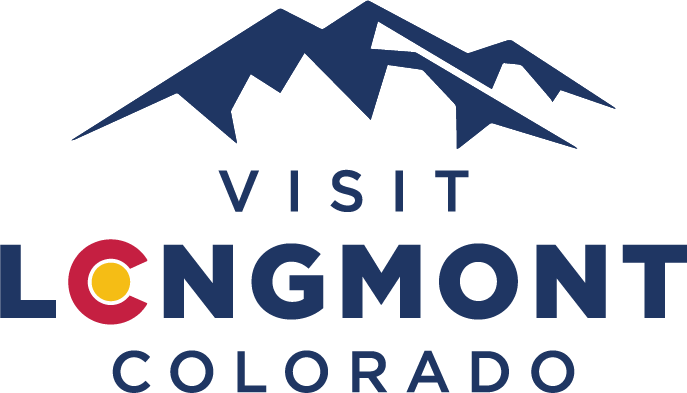
- HOME
- Things To Do
- Arts & Culture
- Art Galleries
- Art In Public Places
- Murals
- Performing Arts/Theatre
- Attractions
- Downtown Longmont
- Cheese Importers
- Cheese Making
- Hot Air Ballooning
- Mile-Hi Skydiving
- Day Trips from Longmont
- Dog Friendly
- Family Fun
- Farms & Farmer's Markets
- Longmont Farmers Market
- Farm Dinners
- Live Music
- Longmont Sunsets
- Museums & History
- Longmont Museum
- Longmont History
- Hygiene, CO
- Stephen H. Long
- J.C. Penney
- Tower of Compassion
- Teddy Roosevelt
- The Callahan House
- Ken Pratt
- Haunted History
- Sandstone Ranch
- Imperial Hotel
- Chief Niwot and the Left Hand Curse
- Dickens Opera House
- Ed Jones Building
- Parks & Outdoors
- Biking
- Birding
- Dickens Farm Nature Area & Tubing
- Fishing
- Golden Ponds
- Hiking
- Lakes & Rivers
- McIntosh Lake Nature Area
- Union Reservoir
- St. Vrain State Park
- Rocky Mountain National Park
- Shopping & Entertainment
- 5 Ways to Spend the Perfect Day in Longmont
- Sports
- Golf
- Disc Golf
- Swimming
- Water Sports
- Winter
- Top Things To Do
- Spas & Wellness
- HOME
- Restaurants
- Asian
- Bars & Pubs
- Brunch
- Coffee Shops, Bakeries, and Ice Cream
- National Coffee Day
- Indian & Nepali
- Mexican
- Featured On TV
- Farmers Markets
- HOME
- Plan
- About Longmont
- Facts & Figures
- Multicultural Heritage
- History
- Old Town Longmont
- Prospect New Town
- eNewsletter
- Itineraries
- Winter
- Spring
- Summer
- Fall
- Carbonation + Elevation
- Girl's Weekend
- Perfect Longmont Itinerary
- Moving To Longmont
- Tips For Visitors
- Visitor Center
- Visitors Guide
- Transportation
Teddy Roosevelt
Teddy Roosevelt’s Longmont Visit Has Lasting Impression
September 25 marks the anniversary of Teddy Roosevelt’s Whistle Stop Tour that visited Longmont in 1900.
Teddy Roosevelt was running for Vice President in 1900 on the ticket with William McKinley. The two would go on to win. However, McKinley was shot on Sept. 6, 1901, by Leon Czolgosz, an anarchist, at the Pan-American Exposition in Buffalo, New York, and he later died from gangrene on Sept. 14, 1901. Following McKinley’s assassination, Roosevelt became president (the youngest in history, up to that point, at age 42) and remained Commander in Chief as the 26th President until 1909.
When Roosevelt visited Longmont, a bustling town of about 3,000 residents, he connected with the community. He was a leader in the Republican Party, a champion of the Progressive Era, a period of social activism, political reform, and elimination of government corruption, and a lifelong naturalist. So naturally, we named our downtown park after him—or did we?
No documentation shows why Longmont Driving Park’s name was changed to Roosevelt Park between 1910 and 1915, but we can assume it was due to the famous President’s train car appearance. That train car appearance and a classic conservationist depiction of Teddy Roosevelt have been celebrated as bronze sculptures found in Longmont adjacent to Roosevelt Park.
Roosevelt Park is located at 700 Longs Peak Ave. and is one of the original parks planned by the Chicago-Colorado Colony. The park covers three city blocks and includes the St. Vrain Memorial Building (recreational), the Senior Center, a multi-use pavilion (used for concerts and events in the summer; ice skating in winter), the Memorial Rose Garden, many sculptures and the Roosevelt Activity & Wading Pool.

